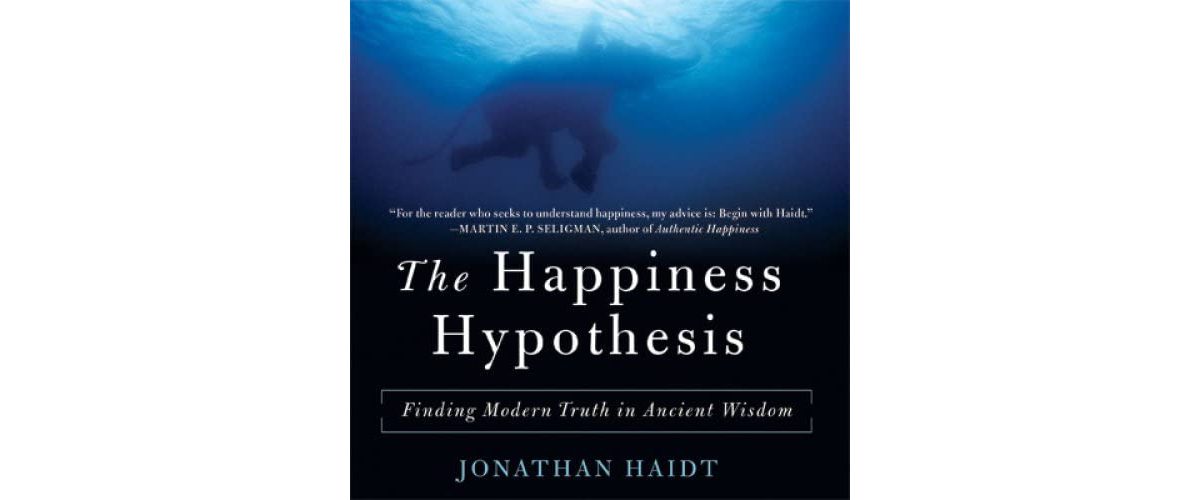
Apr 20, 2022 ‘The Happiness Hypothesis’ by Jonathan Haidt
This book is remarkable and deserves to be very widely read. The cover image is unusual – what on earth could be a man’s relationship riding an elephant to happiness? Haidt uses the image to metaphor the human condition in which two systems govern our behavior. One, represented by the rider, is reason and rational thinking. The other, represented by the elephant, is human emotion. Haidt uses the metaphor throughout the book to describe how emotion and reason interact to produce overt human behavior. We may believe we act because of rational thinking, but emotion and feeling, represented by the elephant, are often unmovable by reason. For example, Haidt describes research demonstrating that humans mostly use reason to justify activities influenced by feeling. In other words, the rider does not control the elephant – the elephant (feeling) controls where the rider goes. If we want to live a life governed by certain moral principles, we have to “train” the elephant rather than persuade it using reason. Throughout the book, Haidt describes how one might train the elephant (meditation is one suggested approach that has had some success) to achieve a specific outcome and how one might be “happy.”
WellBeing International was established with the premise that we need to lead a life that increases animal well-being, environmental health and sustainability, and human happiness and subjective well-being. But how might we do this? Haidt’s book is a primer for “positive psychology,” a movement started by psychologist Robert Seligman. He argued that we should not just focus on how to heal people suffering from mental health pathologies. We should also focus on what might be needed to produce a state of “positive psychology” – i.e., a state of subjective well-being. In this, Seligman mirrors arguments put forward by New Zealand academic David Mellor and his colleagues that animal welfare does not simply involve an absence of animal suffering and distress. It must also include experiences of positive well-being (e.g., play, a stimulating – but not too stimulating – living environment). Haidt’s book explores what we know about creating human happiness and how we might help increase such happiness (or subjective well-being).
I found the book full of fascinating insights and research findings. For example, people arrive on earth with defined genetic traits that support either a more optimistic or pessimistic outlook on life. Those with a set of optimistic genes are, according to Haidt, handed an advantage in the Happiness lottery. But, if one is born with a set of pessimistic genes, it does not necessarily mean that that person is doomed to a life of worry and unhappiness. It is possible to “train” one’s elephant (emotional makeup) to become more optimistic. Haidt describes specific approaches that have been shown to work in real life. In other words, happiness is influenced by both nature (genes) and nurture (environment). By adopting specific behavioral approaches, everybody can achieve a state of subjective well-being – or at least, that is the top-level message I took from the book.


